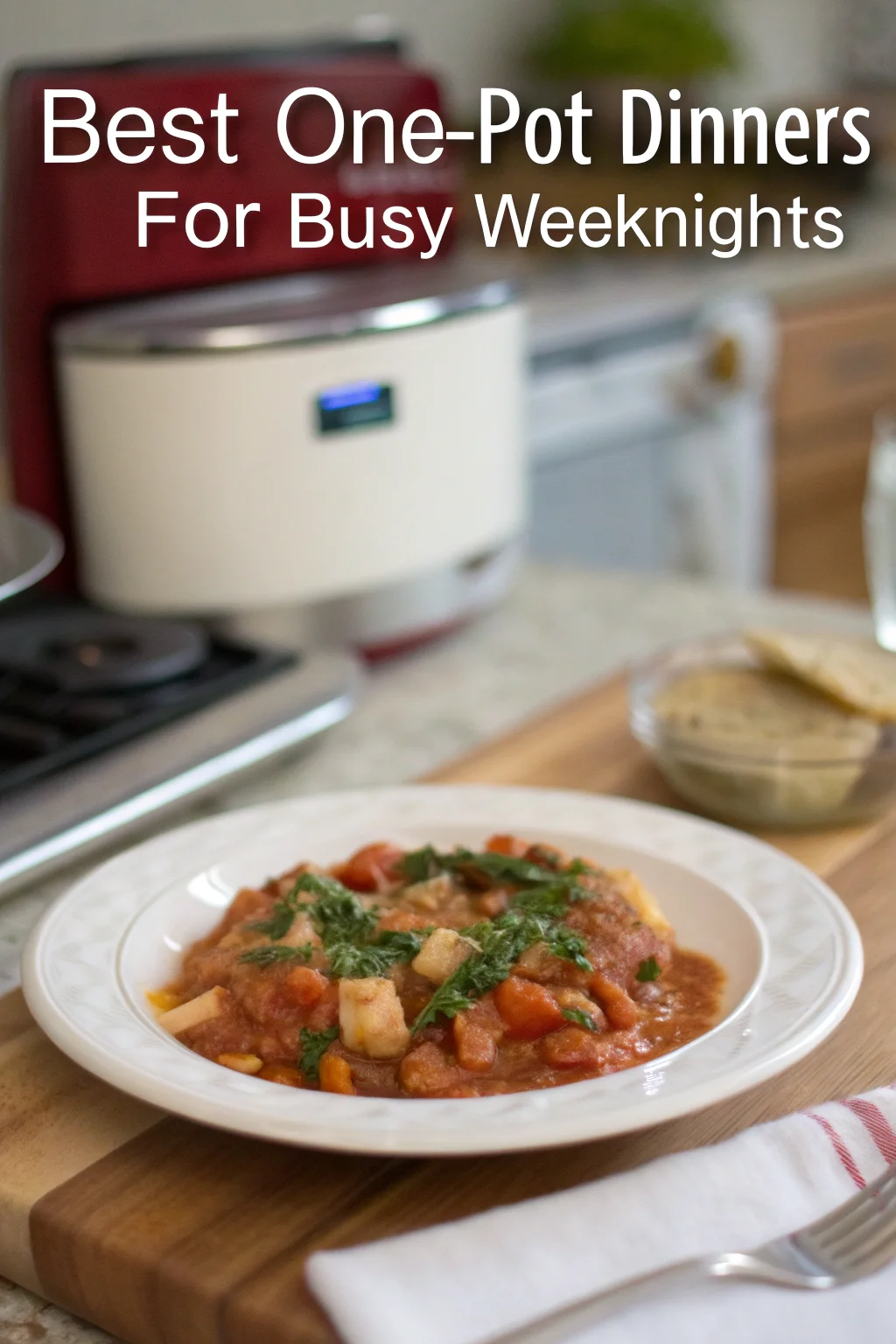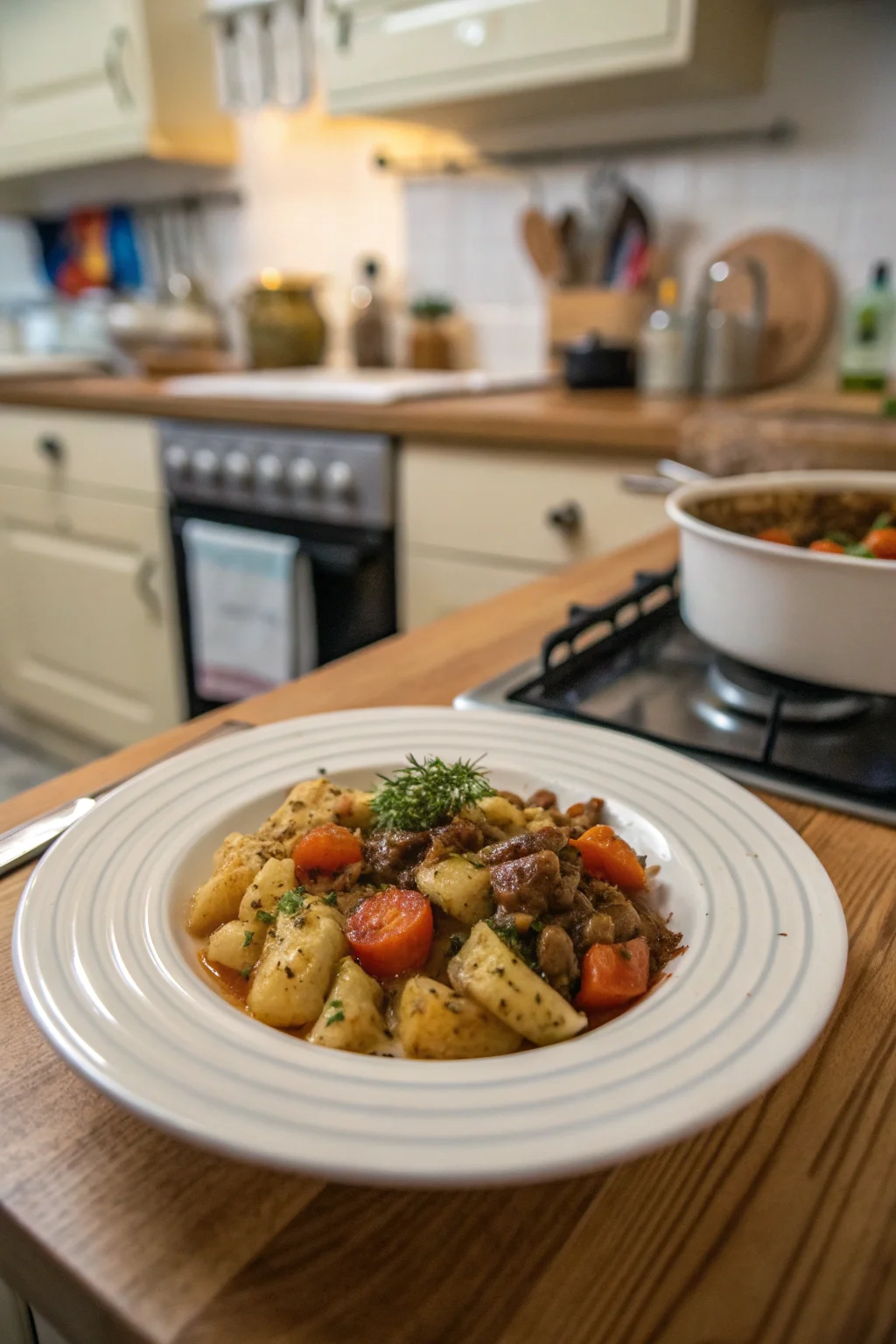In today’s fast-paced world, finding time to prepare a delicious and wholesome dinner can be a challenge. One-pot dinners are a lifesaver for busy weeknights, offering simplicity, minimal cleanup, and hearty meals that the whole family will love. Whether you’re a novice cook or a kitchen pro, there’s a one-pot recipe out there just for you. Let’s explore some common questions about crafting the best one-pot dinners.
Table of Contents
What Are the Benefits of One-Pot Dinners?
One-pot dinners are incredibly convenient for several reasons:
- Time-Saving: With everything cooked in a single pot, you reduce both preparation and cooking time. This is particularly beneficial on those hectic weekdays when you find yourself racing against the clock. By simplifying the cooking process, you also free up more time to relax after a long day.
- Easy Cleanup: Fewer dishes mean less time spent scrubbing pots and pans after dinner. This not only saves water but also reduces the stress associated with post-dinner chores, making mealtime more enjoyable.
- Flavorful: Cooking all ingredients together allows flavors to meld beautifully. The ingredients enhance each other as they cook, resulting in rich, deep flavors that are often hard to achieve with separate cooking methods.
- Versatile: You can adapt recipes based on dietary needs or what you have on hand. Whether you’re looking to accommodate a vegetarian diet, reduce carbs, or simply use up leftovers, one-pot meals offer the flexibility to do so with ease.
For more meal prep tips, check out our guide to efficient meal planning.
What Ingredients Are Essential for One-Pot Dinners?
While the ingredients can vary based on the recipe, some essentials include:
- Proteins: Chicken, beef, tofu, or beans. These can be tailored to your personal taste preferences or dietary restrictions. For example, tofu is a great plant-based option that absorbs flavors well, while beans provide a heart-healthy alternative rich in fiber.
- Vegetables: Onions, bell peppers, carrots, and spinach are versatile options. They add color, flavor, and nutritional value to your meals. Feel free to experiment with seasonal vegetables to keep things fresh and exciting.
- Grains: Rice, pasta, or quinoa work well. Grains provide the bulk of many one-pot meals and are excellent for soaking up the flavors of the dish. You can switch between different types of pasta or try ancient grains like farro for variety.
- Liquids: Broth or water to help cook your grains and add flavor. Using broth instead of water can significantly enhance the taste of your dish. Consider low-sodium options if you’re watching your salt intake.
- Spices and Herbs: Garlic, thyme, and basil can enhance flavors significantly. Spices and herbs are the secret to making each dish unique and can be adjusted to suit your spice tolerance and flavor preferences.
Having these staples on hand can make preparing one-pot meals quick and easy. Stocking your pantry with these basics ensures you can whip up a meal even on short notice.
How Can I Make One-Pot Meals Healthier?
To boost the nutritional value of your one-pot dinners:
- Add More Veggies: Double up on vegetables for added fiber and nutrients. Vegetables like kale, broccoli, and zucchini are nutrient-dense and can be incorporated into most dishes without overpowering the other flavors.
- Cut Back on Salt: Use herbs and spices to flavor your dish instead of salt. Fresh citrus juice, such as lemon or lime, can also brighten up a dish without adding sodium.
- Choose Whole Grains: Opt for brown rice or whole-wheat pasta for added fiber. These choices help maintain stable blood sugar levels and keep you feeling fuller longer.
- Use Lean Proteins: Chicken breast, turkey, or plant-based proteins are great options. These proteins are lower in saturated fat, making them heart-healthier choices compared to red meat.
For more healthy eating tips, explore our healthy dinner recipes.
Can One-Pot Dinners Be Prepared Ahead of Time?
Yes, many one-pot meals can be prepared ahead of time:
- Chop Vegetables: Cut up veggies and store them in airtight containers. This not only saves time but also helps you make the most of fresh produce before it spoils.
- Pre-Cook Proteins: Cook proteins partially and add them to the dish just before serving. This ensures they remain juicy and flavorful and saves time during the final cooking process.
- Use a Slow Cooker: Assemble ingredients in your slow cooker in the morning for a ready-to-eat dinner by evening. This method is particularly useful for tougher cuts of meat that benefit from slow, gentle cooking.
Meal prepping can save you even more time during the week. Learn more about meal prepping techniques.
What Are Some Popular One-Pot Dinners?
Popular one-pot dinner recipes include:
- Chili: A hearty blend of beans, meat, and spices. Perfect for a cold night, chili can be customized with various beans and spices to suit your taste. Consider adding corn or bell peppers for extra texture.
- Risotto: Creamy rice cooked slowly with broth and cheese. This dish requires patience but rewards with rich, creamy flavors. Try adding mushrooms or asparagus for variation.
- Stir Fry: Quickly cooked vegetables and protein in a savory sauce. Stir fry is a great way to use up leftover vegetables and can be served over rice or noodles for a complete meal.
- Casseroles: Baked dishes with layers of ingredients. Casseroles are comforting and can be made with a variety of fillings, from cheesy pasta to veggie-packed bakes.
These recipes are crowd-pleasers and often easy to customize. Don’t hesitate to adjust spices or ingredients based on what you have available or the dietary needs of your family.
How Do I Choose the Right Pot for Cooking?
Choosing the right pot is crucial for successful one-pot meals:
- Size: Ensure your pot can accommodate all ingredients with room to stir. A pot that’s too small can lead to uneven cooking and spills.
- Material: Non-stick, stainless steel, or cast iron are all excellent choices. Non-stick is great for easy cleanup, stainless steel is versatile and durable, and cast iron retains heat well, making it ideal for slow cooking.
- Lid: A tight-fitting lid is essential for steam cooking. It helps retain moisture and flavors, ensuring your dish stays succulent and aromatic.
Investing in a good-quality pot can improve your cooking experience significantly. Consumer Reports offers reviews on various cookware.
Are There Vegetarian One-Pot Dinner Options?
Absolutely, there are plenty of vegetarian one-pot dinner options:
- Vegetable Curry: A mix of vegetables cooked in a spiced coconut milk sauce. This dish is rich in flavor and can be made with a variety of vegetables, making it a versatile choice for vegetarians.
- Lentil Soup: Hearty and filling, with plenty of protein. Lentils are an excellent source of plant-based protein and cook relatively quickly, making them perfect for one-pot meals.
- Stuffed Peppers: Peppers filled with rice, beans, and spices. These are not only visually appealing but also customizable with various fillings to suit different tastes.
These dishes are not only filling but also packed with nutrients, making them a great choice for anyone looking to reduce their meat consumption without sacrificing flavor or satisfaction.
Can I Freeze One-Pot Meals?
Yes, many one-pot meals freeze well:
- Cool Completely: Allow the dish to cool before transferring to freezer-safe containers. This helps maintain the texture and flavor of the dish.
- Portion Control: Freeze in individual portions for easy reheating. This is particularly useful for single servings or for those who enjoy variety in their meals throughout the week.
- Label and Date: Keep track of what you have and use it within three months. This ensures you’re always eating meals at their best quality and helps prevent waste.
Freezing meals is an excellent way to have quick dinners ready for future busy nights. It’s a great strategy for maintaining a balanced diet even when time is limited.
How Do I Prevent One-Pot Meals from Becoming Soggy?
To avoid soggy one-pot meals:
- Proper Ratios: Use the right amount of liquid for your grains or pasta. Too much liquid can lead to mushy textures, so it’s important to measure accurately.
- Add Ingredients at the Right Time: Add delicate vegetables or herbs towards the end of cooking. This preserves their texture and flavor, preventing them from overcooking.
- Simmer, Don’t Boil: Slow cooking helps to preserve texture. Rapid boiling can break down ingredients too quickly, leading to a less desirable consistency.
Attention to these details can make a big difference in your final dish, ensuring it’s as delicious as it is convenient.
What Are Some Time-Saving Tips for One-Pot Dinners?
Maximize efficiency with these tips:
- Use Pre-Chopped Ingredients: Save time by purchasing pre-cut veggies. While slightly more expensive, they can be a lifesaver on particularly busy days.
- Double Recipes: Cook extra for leftovers or future meals. This is a great way to make the most of your cooking efforts and ensures you always have a home-cooked meal on hand.
- Utilize Kitchen Gadgets: Consider tools like an Instant Pot for even faster cooking. These appliances can significantly reduce cooking time for dishes that typically require long simmering.
These strategies can help streamline your dinner prep process, making it easier to enjoy home-cooked meals even on the busiest days.
Are One-Pot Dinners Suitable for Large Families?
Yes, one-pot dinners are ideal for feeding large families:
- Scalable Recipes: Easily double or triple recipes. This makes it simple to adjust for family gatherings or unexpected guests.
- Affordable: Often use budget-friendly ingredients. One-pot meals are typically based on staples like grains and vegetables, which are less expensive than many other meal components.
- Kid-Friendly: Many one-pot meals are customizable to suit picky eaters. You can easily add or omit certain ingredients to match the preferences of different family members.
These meals can simplify dinner for families of any size, making it easier to get everyone fed and happy with minimal stress.
What Are Some Quick and Easy One-Pot Dinner Recipes?
Here are a few quick one-pot recipes:
- Chicken and Rice: A simple, satisfying classic. This dish can be flavored with herbs and spices such as rosemary or paprika for a unique twist.
- Pasta Primavera: Pasta with fresh vegetables and olive oil. This light dish is perfect for spring and summer, making use of seasonal produce.
- Beef Stroganoff: Tender beef with creamy sauce over noodles. For a healthier version, use Greek yogurt instead of sour cream.
These dishes are not only quick but also satisfying and delicious. For more inspiration, visit BBC Good Food.
Wrap-Up
One-pot dinners are an excellent solution for anyone looking to simplify their weeknight meals. They offer convenience, flavor, and flexibility, accommodating various tastes and dietary needs. Whether you’re preparing meals for a family or a single serving, these dishes can help make your evenings more enjoyable and less stressful. Dive into the world of one-pot cooking and discover a new favorite dinner recipe today!


